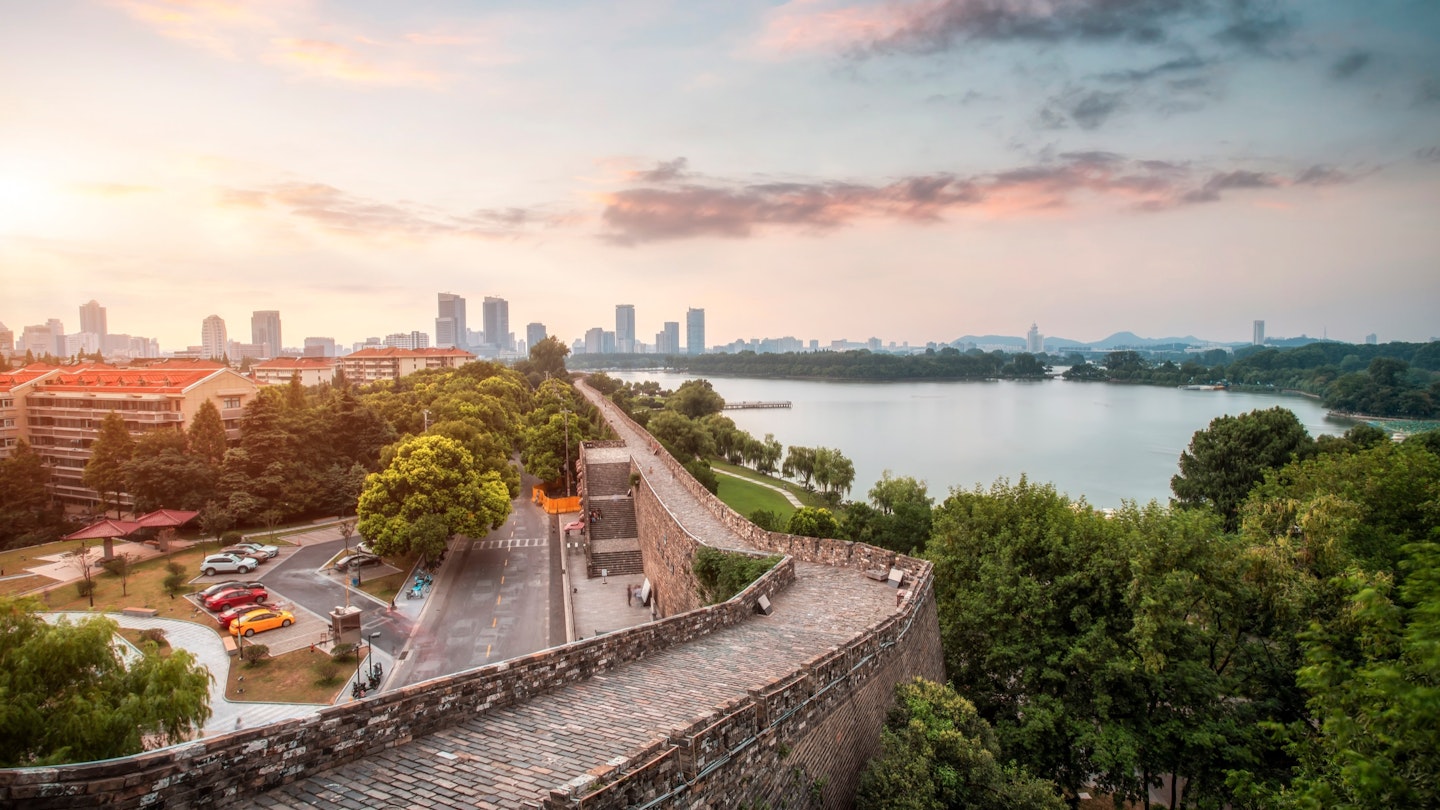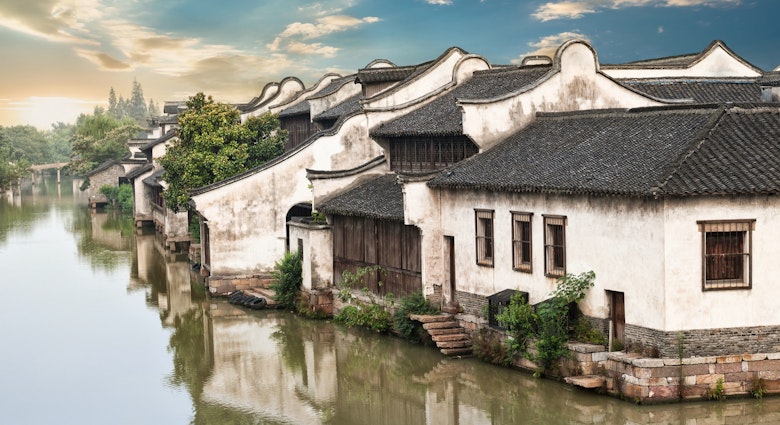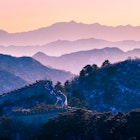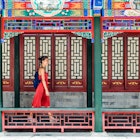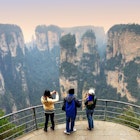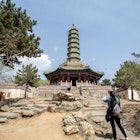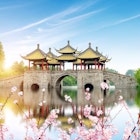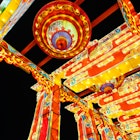Defensive walls are part of China’s historic DNA. For as long as there have been towns and cities in China, there have been walls around them. The Chinese character cheng 城, meaning city, also means city wall – the concept of a large settlement and a wall around it were indivisible.
The Great Wall, mightiest defensive wall of them all, is actually a name bestowed upon it from outside China. A literal translation of the Chinese for Great Wall – chang cheng长城 - would be ‘long city wall.’
Despite China’s history of building battlements, most of its towns and cities dismantled their crumbling old walls over the centuries, as cities grew, traffic picked up, and technology progressed. But that makes the surviving cheng that wraps around Nanjing, the most important city in Jiangsu province, a glorious exception and one of the highlights of a trip to the ancient capital of Nanjing.

Visiting the monumental wall
The first emperor of the Ming dynasty, Zhu Yuanzhang (known as the Hongwu emperor), defeated the Mongols and founded a new era for China in 1368 AD. With Nanjing as his capital, work began in earnest. A magnificent palace was built, and a new, higher city wall was constructed. With an outer wall more than 37 miles in length, it was among the longest city walls ever built. And with around 16 miles of it surviving today, It is the longest existing masonry wall in China and even in the world.
It’s a testament to the high quality of construction that so much of Nanjing’s wall has endured time and progress. An army of (by some estimates) 1 million skilled and unskilled workers took 28 years to complete it, laying hundreds of millions of bricks fused together with a highly effective mortar made from lime and glutinous rice. Parts of the wall are 69 feet high (almost five double-decker buses stacked on top of each other), and wide enough for two of those buses to pass each other on top of the battlements.
Culture, Craft and Beauty – A Week in Jiangsu Province
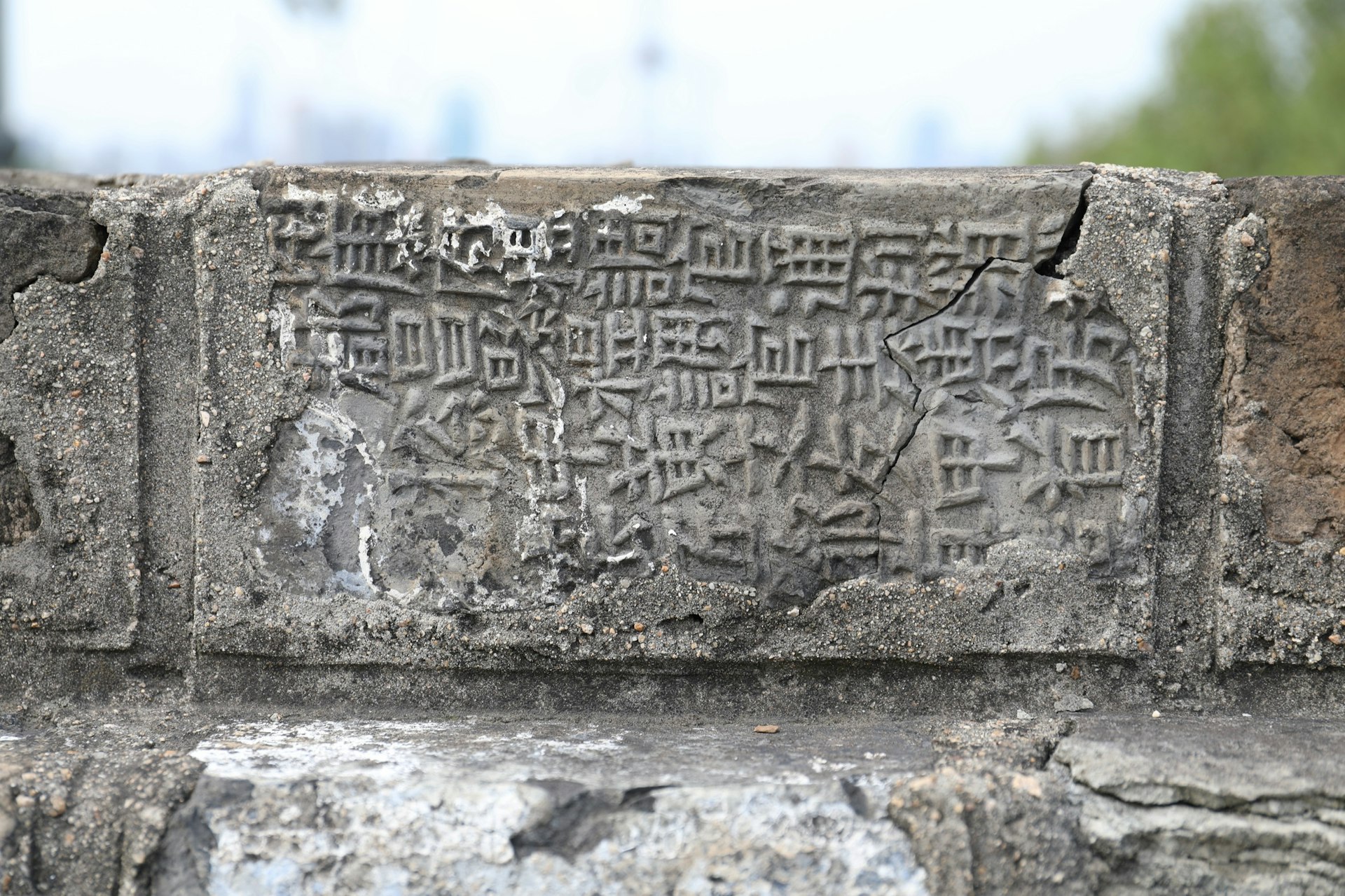
A hiking highlight in China
Where once armed sentries would have patrolled Nanjing’s city wall, these days it’s the domain of locals taking exercise, groups of young urban hikers, tourists snapping photographs, and strolling couples enjoying the splendid views that contrast the cityscape of Nanjing, crowed by the 1,500-foot-tall Zifeng Tower, with the undulating, weather-worn battlements evoking the achievements of a distant age.
Part of the fun of hiking along Nanjing’s city wall is keeping an eye out for bricks carved with Chinese characters. These stenciled inscriptions, a kind of quality seal, reveal the kiln where the bricks were fired, the supervisor who was in charge, and even the individual craftsperson. Kilns hundreds of miles away supplied the bricks, and only bricks of the highest quality were accepted. With the maker’s stamp on it, shoddy workmanship could easily be punished.
Another aspect of Nanjing’s city wall that makes it such a special urban hike is the way it flows organically, following the natural topography of the city and encompassing rivers, lakes and hills – natural defensive features – into its design. Typically, city walls in China were arranged like a quadrangle, with straight sides. Xi’an, for example, and Beijing’s wall before it was dismantled in the 1960s, form almost a perfect square. It’s far more interesting to follow on foot the twists and turns of Nanjing’s wall, and you’re rewarded with an ever-changing view.
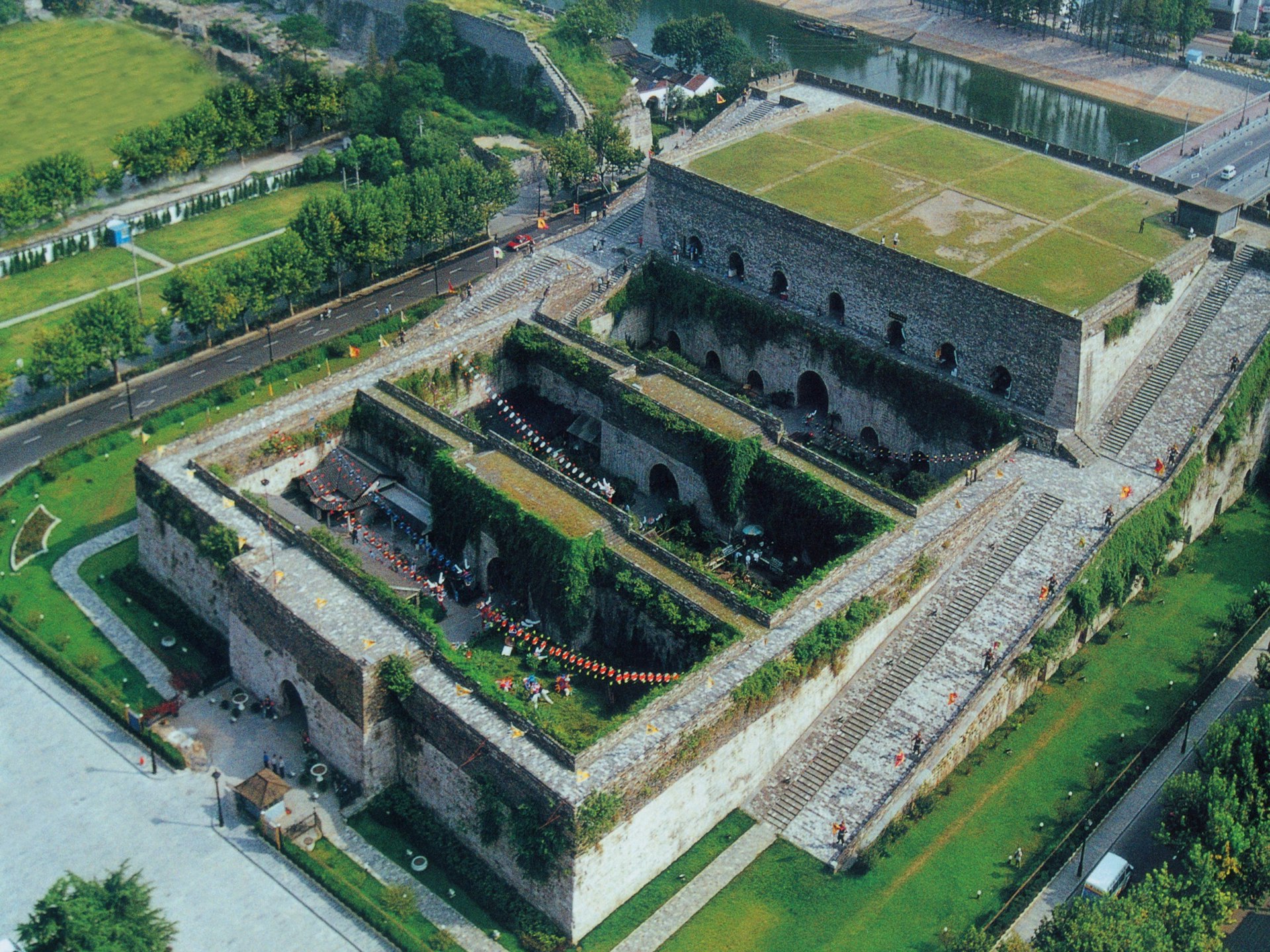
What to see along Nanjing’s city wall
Climbing the wall at Xuanwu Gate and hiking south, a section of wall runs for one mile, offering sensational views. On one side is the glassy expanse of Xuanwu Lake, flanked by willow trees, and Purple Mountain beyond it, home to the tomb of the first Ming Emperor. On the other side are the space-age towers of modern Nanjing. A broad curve of wall leads towards the seven tapering tiers of the pagoda at Jiming Temple, and before that, the hidden gem Nanjing Ming City Wall History Museum, built into the wall itself and dedicated to its history.
The most impressive architectural feature of the wall is the formidable Zhonghua Gate in the south. The most spectacular of 13 gates that once dotted the walls, it guarded the ‘front door’ of Nanjing – the name literally means ‘Gate of China.’ In fact, it looks more like a castle; anyone coming into the city would have had to pass through a series of connecting spaces leading to the wall and overlooked by deadly firing positions. In its day, the Zhonghua Gate would have housed a garrison of 3,000 soldiers.
On both sides of the gate broad stone ramps rise from street level, built to allow mounted soldiers to gallop quickly onto the battlements above. These days it’s not horses but bicycles, which can be rented for a 1.9-mile ride along the top to Dongshuiguan Park, where you can visit an old water gate built into Nanjing’s city wall.
For one last glimpse of the past hike to Wu Gate, at the entrance to the former Ming imperial palace. Unlike the resilient wall, nothing much remains today of the Hongwu emperor’s grand abode except wistful ruins – stone gates and column bases set inside a quiet park.
Jiangsu Province: Welcome to the Land of Water
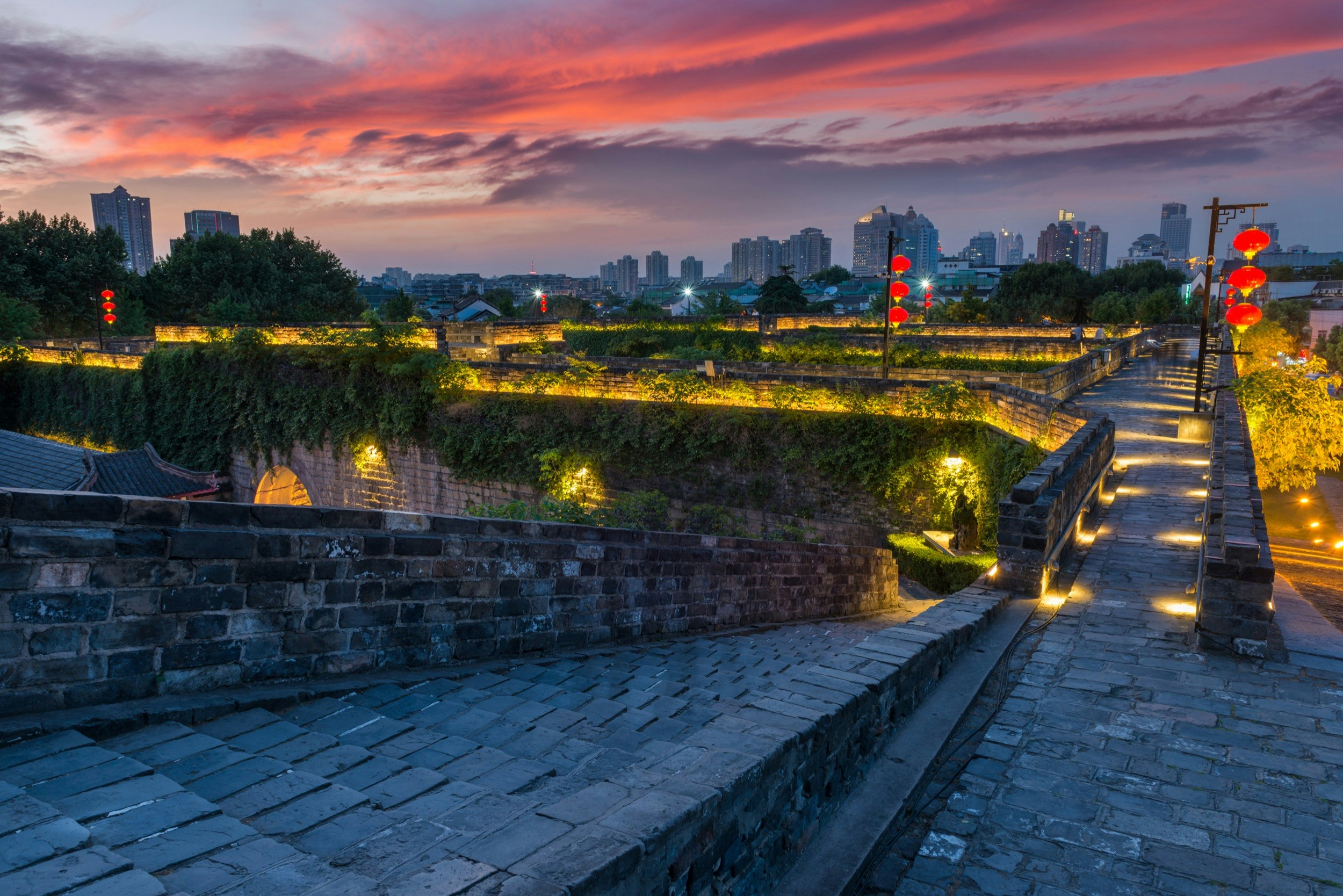
Suggested Routes to Hike the Wall
With so many handy access points up to the restored sections of Nanjing City Wall, you can hike as little or as much as you have the energy for. A good place to start is Zhonghua Gate in the south, walking or cycling northeast to Dongshui Guan. From there it’s another hour on foot to Wu Gate, passing through the ruins of the former Ming Imperial Palace. Then allow another hour to reach Jiefang Gate, which was added to the wall relatively recently, in 1952. Then it’s a short hop to Taicheng, and along Xuanwu Lake to Heping Gate, the most northerly part of the wall.
For the very fit it’s possible to circumnavigate the whole wall perimeter in a day, although it’s recommended to avoid attempting this in summer, a season when Nanjing earns its reputation as one of the ‘four furnaces of China’. The full course of the wall hike is approximately 35-40 kilometers depending on detours, and completing it means passing through parks and along roads in between the surviving sections of battlements. This certainly qualifies the route as an ‘urban hike’, presenting a fascinating contrast between old and new, and interesting views at every turn.
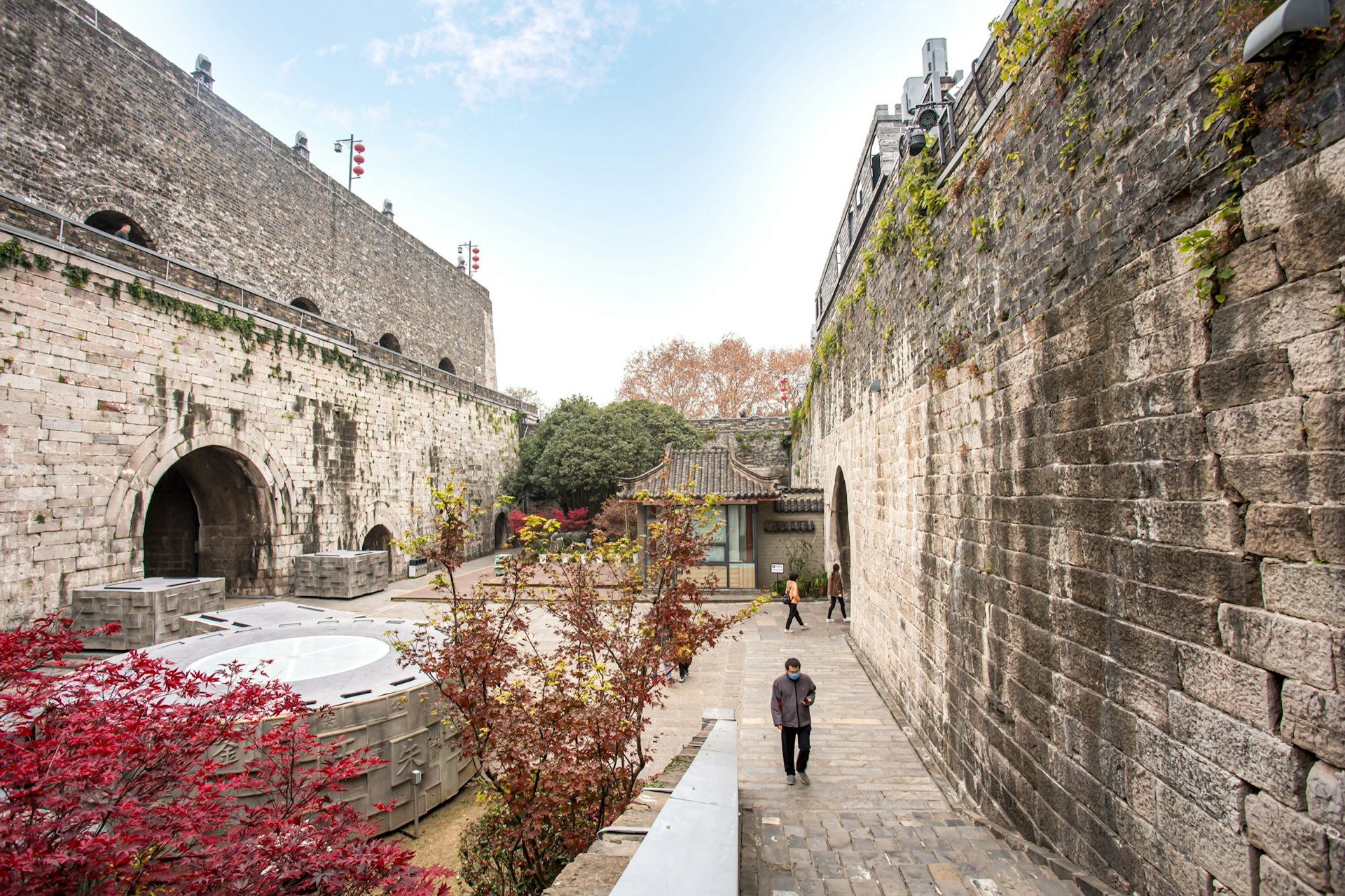
Restoration of Nanjing City Wall
Designated as a protected national relic in the 1980s, restoration of the wall has occurred piecemeal ever since – a gate here, a stretch of bricks there. A big push occurred leading up to the Youth Olympics, held in Nanjing in 2014, where previously unrestored sections were spruced up and cleared of encroaching vegetation. In a drive to be faithful to the original, restorers asked Nanjing residents to provide information on the whereabouts of old bricks, such as those being used as building materials in houses and other structures.
In the past few years, the government pressed ahead with yet more restoration plans, which included cleaning the moat, planting more trees alongside the wall, and adding more lighting along its length. Today fully renovated stone walkways await the urban hiker, while many of the missing sections are marked by connecting urban parkways or walking routes.
